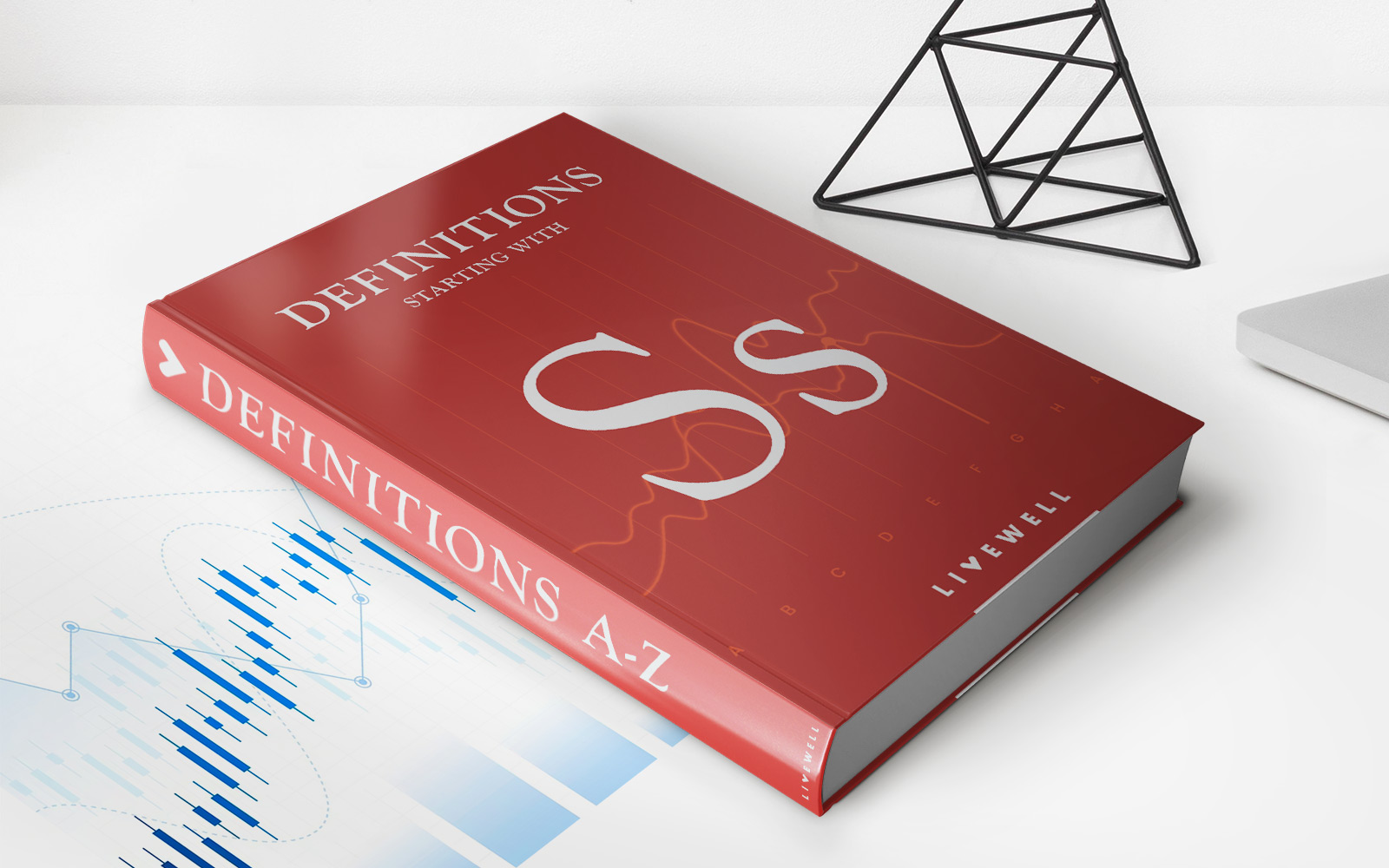

Finance
What Is A 10-Year Term Life Insurance Policy?
Modified: February 21, 2024
Learn about 10-year term life insurance policies and how they can provide financial security for a decade. Find out how you can protect your loved ones with this flexible coverage option.
(Many of the links in this article redirect to a specific reviewed product. Your purchase of these products through affiliate links helps to generate commission for LiveWell, at no extra cost. Learn more)
Table of Contents
- Introduction
- What is Term Life Insurance?
- The Basics of a 10-Year Term Life Insurance Policy
- How Does a 10-Year Term Life Insurance Policy Work?
- Pros and Cons of a 10-Year Term Life Insurance Policy
- Is a 10-Year Term Life Insurance Policy Right for You?
- How to Compare and Choose a 10-Year Term Life Insurance Policy
- Conclusion
Introduction
Welcome to our comprehensive guide on 10-year term life insurance policies. In today’s uncertain world, it is crucial to protect yourself and your loved ones with the right life insurance coverage. Term life insurance is a popular and affordable option for many individuals and families. It provides a financial safety net for a specified period, known as the term.
In this article, we will take an in-depth look at 10-year term life insurance policies. We will explore what they are, how they work, and the pros and cons associated with them. We will also discuss whether a 10-year term life insurance policy is the right choice for your individual needs.
If you are new to the concept of life insurance, don’t worry – we will start with the basics. Understanding the fundamentals of term life insurance will help you grasp the significance of a 10-year term policy and make a well-informed decision.
Before we dive in, it is important to note that while we strive to provide accurate and up-to-date information, it is always advisable to consult with a licensed insurance professional who can assess your specific circumstances and guide you through the process.
What is Term Life Insurance?
Term life insurance is a type of life insurance policy that provides coverage for a specific period, or term, ranging from 5 to 30 years. It is designed to provide financial protection to your beneficiaries in the event of your death during the policy term.
Unlike permanent life insurance policies such as whole life or universal life insurance, term life insurance does not accrue cash value over time. It is purely a death benefit-based insurance policy, meaning it only pays out if the insured individual passes away within the term of the policy.
One of the key advantages of term life insurance is its affordability. Since it offers coverage for a predetermined period and does not include any investment component, the premiums for term life insurance policies are typically lower than those of permanent insurance policies.
Term life insurance provides your loved ones with a financial safety net that can help cover various expenses, such as mortgage payments, outstanding debts, educational expenses, or even funeral costs. It offers peace of mind, knowing that your family is protected from the financial burden that could arise in the event of your untimely demise.
It is important to note that term life insurance policies don’t usually require a medical examination, making them more accessible to individuals with certain health conditions or those who may have difficulty qualifying for other types of insurance coverage.
Now that we have a basic understanding of term life insurance, let’s take a closer look at the specifics of a 10-year term life insurance policy and how it operates.
The Basics of a 10-Year Term Life Insurance Policy
A 10-year term life insurance policy is a specific type of term life insurance that provides coverage for a period of 10 years. It is a popular choice for individuals who have short-term financial obligations or want coverage until a specific milestone, such as paying off a mortgage or until their children become financially independent.
With a 10-year term life insurance policy, the death benefit remains constant throughout the entire term. This means that the payout to your beneficiaries will not change, regardless of when you pass away during the 10-year period. However, it’s important to note that if the policyholder dies after the term expires, there will be no death benefit paid out.
Similar to other term life insurance policies, a 10-year term policy does not accumulate cash value. This differs from permanent life insurance options, such as whole life insurance, which have an investment component that can grow over time.
The premiums for a 10-year term life insurance policy are determined based on several factors, including the insured person’s age, health, lifestyle, and the amount of coverage desired. Typically, the younger and healthier you are, the lower your premiums will be.
In the event that you outlive your 10-year term life insurance policy, most insurance providers offer the option to renew the policy or convert it to a permanent life insurance policy without taking another medical exam. However, it’s important to keep in mind that the cost of renewing or converting the policy may increase significantly, as it is based on your age at the time of renewal or conversion.
A 10-year term life insurance policy can provide the necessary coverage during a crucial period of your life, offering financial protection to your loved ones should the worst happen. However, it’s essential to weigh the pros and cons of this specific term length to determine if it aligns with your unique circumstances and goals.
Now that we understand the basics of a 10-year term life insurance policy, let’s dive deeper into how it works and explore its advantages and disadvantages.
How Does a 10-Year Term Life Insurance Policy Work?
A 10-year term life insurance policy operates by providing coverage for a specific duration of 10 years. During this period, if the policyholder passes away, the insurance company will pay out a death benefit to the designated beneficiaries.
When purchasing a 10-year term life insurance policy, you will need to determine the coverage amount, also known as the death benefit. This is the amount of money that will be paid to your beneficiaries in the event of your death. It is important to carefully consider this amount, as it should be sufficient to cover your financial obligations and provide for your loved ones.
To obtain a 10-year term life insurance policy, you will typically need to go through an application process that involves providing information about your age, health history, lifestyle habits, and other relevant details. The insurance company will use this information to assess your risk profile and determine the premium you will need to pay.
It is worth noting that the premiums for a 10-year term life insurance policy are generally fixed throughout the entire term. This means that your premium payments will remain the same each year, regardless of any changes in your health or lifestyle during that time.
During the 10-year term, it is crucial to make timely premium payments to keep the policy in effect. Failure to pay the premiums can result in the policy being canceled or lapsing, which would mean the loss of all coverage and any premiums already paid.
If you were to pass away within the 10-year term, your designated beneficiaries would need to file a claim with the insurance company. They would be required to provide the necessary documentation, such as a death certificate, to prove the validity of the claim. Once the claim is approved, the insurance company will pay out the death benefit to the beneficiaries.
It is important to note that if you outlive the 10-year term, there is no cash value or refund associated with a term life insurance policy. This means that if you reach the end of the policy term and are still alive, the coverage will expire, and no death benefit will be paid out.
In some cases, if your financial needs or circumstances change during the term, you may have the option to convert your 10-year term life insurance policy into a permanent life insurance policy, such as whole life or universal life. This conversion typically allows you to maintain coverage for the rest of your life and may offer additional benefits, such as a cash value component.
Now that we understand how a 10-year term life insurance policy works, let’s explore the advantages and disadvantages of choosing this specific term length.
Pros and Cons of a 10-Year Term Life Insurance Policy
A 10-year term life insurance policy offers several advantages and disadvantages that you should consider when deciding if it is the right choice for your needs. Let’s take a closer look at the pros and cons:
Pros:
- Affordability: 10-year term life insurance policies tend to have lower premiums compared to longer-term policies, which can make them more budget-friendly.
- Flexibility: A 10-year term allows you to match the coverage period to specific financial obligations, such as a mortgage or your children’s college education.
- Short-term commitment: Unlike longer-term policies, a 10-year term provides coverage for a specific period, meaning you are not locked in for an extended period if your needs change.
- No medical exam: Many insurance providers offer 10-year term policies without requiring a medical examination, making them more accessible to individuals with certain health conditions.
Cons:
- Limited coverage duration: The primary drawback of a 10-year term policy is that the coverage is limited to only 10 years. If you still need coverage beyond that point, you will need to renew the policy or seek alternative options.
- Premium increases upon renewal: When the 10-year term expires, the policy can typically be renewed, but the premium may increase significantly, especially if your health has deteriorated over the previous term.
- No cash value: Unlike permanent life insurance policies, a 10-year term policy does not accumulate a cash value that you can borrow against or use as an investment vehicle.
- May not address long-term needs: If you have long-term financial obligations or anticipate the need for coverage well beyond 10 years, a longer-term policy may be more suitable.
It’s essential to weigh these pros and cons against your individual circumstances, financial goals, and needs to determine if a 10-year term life insurance policy aligns with your overall insurance strategy.
Next, we will discuss how to compare and choose a 10-year term life insurance policy to ensure you make an informed decision.
Is a 10-Year Term Life Insurance Policy Right for You?
Deciding if a 10-year term life insurance policy is right for you depends on several factors. It’s important to evaluate your current financial situation, goals, and potential future needs. Here are some considerations to help you determine if a 10-year term life insurance policy aligns with your individual circumstances:
Short-Term Financial Obligations: If you have specific short-term financial obligations that you want to protect, such as a mortgage or your children’s education expenses, a 10-year term policy can provide coverage during that critical period. It ensures that your loved ones are financially protected in case of your untimely passing.
Budget Constraints: If you have a limited budget but still want to secure life insurance coverage, a 10-year term policy may be more affordable compared to longer-term policies. It allows you to obtain necessary protection without straining your finances.
Health Considerations: If you have certain health conditions or a high-risk lifestyle, obtaining traditional life insurance coverage may be challenging. However, many insurance providers offer 10-year term policies without requiring a medical examination, making it a viable option for individuals who may have difficulty qualifying for other types of insurance coverage.
Anticipated Future Needs: If you foresee having ongoing financial obligations that extend beyond 10 years or if you are looking for coverage for the long term, such as estate planning purposes, a 10-year term policy may not be the most suitable choice. In such cases, a longer-term policy, like a 20 or 30-year term, or a permanent life insurance policy, may better meet your needs.
It’s essential to carefully evaluate your current and future financial needs, as well as your budget, to determine if a 10-year term life insurance policy aligns with your goals and provides adequate coverage for your loved ones.
Next, we will discuss how to compare and choose a 10-year term life insurance policy to ensure you select the right coverage for your needs.
How to Compare and Choose a 10-Year Term Life Insurance Policy
When comparing and choosing a 10-year term life insurance policy, it’s important to consider the following factors to ensure you select the right coverage for your needs:
1. Research Different Insurance Providers: Start by researching and comparing insurance providers that offer 10-year term life insurance policies. Look for reputable companies with solid financial ratings and a history of reliable customer service.
2. Determine the Desired Coverage Amount: Evaluate your financial obligations and determine the amount of coverage you need. Consider factors such as outstanding debts, income replacement needs, and future financial goals for your beneficiaries.
3. Obtain Multiple Quotes: Request quotes from multiple insurance providers for a 10-year term policy. Compare the premiums, coverage limits, and any additional policy features or riders offered by each provider.
4. Understand the Policy Details: Review the policy documents carefully and ask questions to fully understand the terms and conditions of the 10-year term life insurance policy. Pay attention to exclusions, limitations, and any potential renewal or conversion options.
5. Consider the Financial Stability of the Insurance Provider: Assess the financial strength and stability of the insurance company by checking their ratings from reputable rating agencies like A.M. Best, Moody’s, or Standard & Poor’s. Ensure the company has a solid track record of meeting their financial obligations to policyholders.
6. Evaluate Customer Satisfaction: Research customer reviews and ratings to gauge the satisfaction level of existing policyholders with the insurance provider. Pay attention to feedback related to their claims handling process and customer service experience.
7. Seek Professional Advice: Consider consulting with a licensed insurance agent or financial advisor who specializes in life insurance. They can provide guidance tailored to your specific needs and help you navigate through the policy selection process.
8. Review and Reevaluate Regularly: Life circumstances change over time, so it’s important to review your 10-year term life insurance policy periodically. Assess if your coverage still aligns with your financial goals, and make any necessary adjustments or explore alternate options as needed.
By considering these steps, you can make an informed decision when comparing and selecting a 10-year term life insurance policy that best meets your needs and offers reliable coverage for the specified term.
Before we conclude, let’s summarize the key points we’ve covered in this guide on 10-year term life insurance policies.
Conclusion
When it comes to protecting your loved ones and securing their financial future, a 10-year term life insurance policy can be a valuable tool. It offers affordable coverage for a specific period, allowing you to address short-term financial obligations and provide peace of mind for your beneficiaries.
We explored the basics of a 10-year term life insurance policy, understanding how it works and the pros and cons associated with it. We discussed factors to consider when determining if this term length is suitable for your needs, such as your financial obligations, budget, and anticipated future needs.
Additionally, we provided guidance on how to compare and choose a 10-year term life insurance policy, emphasizing the importance of researching different insurance providers, obtaining multiple quotes, and carefully reviewing the policy details. Seeking professional advice and regularly reviewing your coverage were also highlighted as crucial steps to ensure your insurance aligns with your changing circumstances.
Remember, while this guide provides a comprehensive overview of 10-year term life insurance policies, it’s important to consult with a licensed insurance professional who can assess your specific situation and recommend the best course of action.
By making an informed decision and selecting the right 10-year term life insurance policy, you can have peace of mind knowing that your loved ones will be protected financially and able to navigate challenging times without additional financial burden.
Don’t delay in securing the protection your family deserves. Start exploring your options for a 10-year term life insurance policy today and take a significant step towards securing a brighter future for your loved ones.














